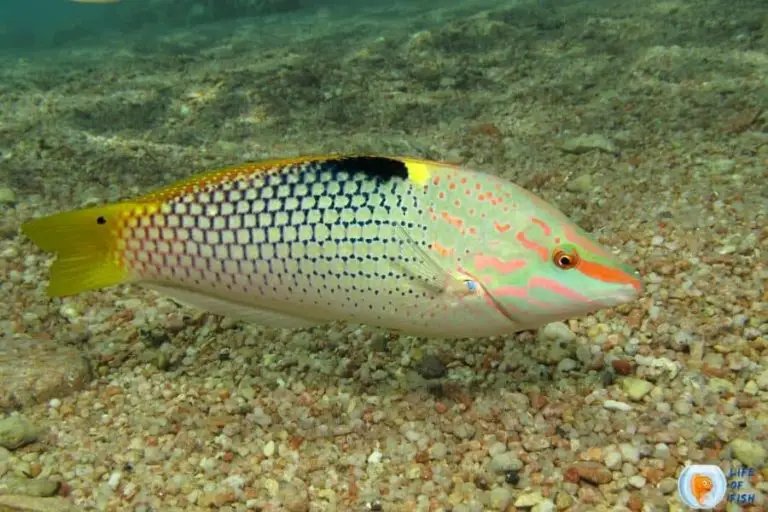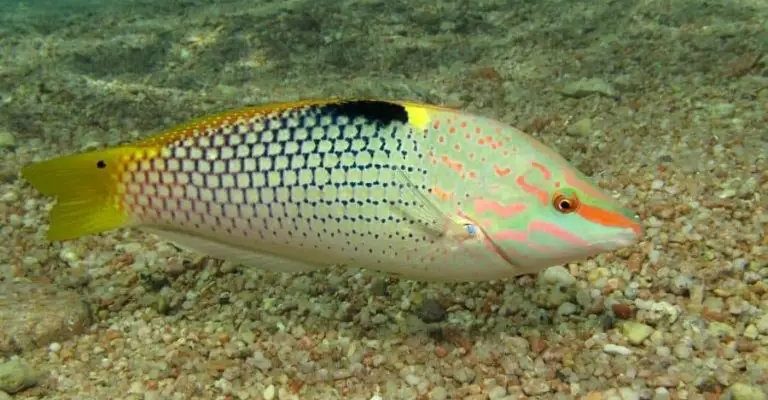
You’ve probably heard the phrase “an ounce of prevention is worth a pound of cure,” and that’s especially true for wrasse. Knowing the common health problems they face and how to prevent them can save you a lot of worry and heartbreak. Let’s dive into some of these issues and discuss how you can keep your wrasse happy and healthy.
Understanding Stress in Wrasse
Stress can be a silent killer in fish, and wrasse are no exception. Imagine being in a new home, surrounded by unfamiliar faces and noises. That’s what moving to a new tank feels like for them. Stress can lead to other health issues, like weakened immune systems, making them more susceptible to diseases.
To minimize stress, it’s crucial to acclimate your wrasse slowly to their new environment. Start by floating the bag containing the fish in the tank for about 30 minutes. Gradually mix tank water into the bag to help them adjust.
Here are some factors that can contribute to stress in wrasse:
- Crowded tanks
- Poor water quality
- Incompatible tank mates
- Sudden changes in environment
Monitoring their behavior often helps. If you see your fish hiding more than usual or acting skittish, it might be time to check their environment.
How to Create a Stress-Free Environment
Creating an optimal living space for your wrasse can go a long way in reducing stress. Ensure that the tank is spacious enough for them to swim freely. Wrasse enjoy hiding spots, so adding rocks, and caves can help them feel secure.
Additionally, keeping the water quality in check is vital. Regularly test for ammonia, nitrates, and pH levels to keep things stable. A well-maintained tank is a happy tank!
Common Diseases in Wrasse
Just like we can catch a cold or flu, wrasse can suffer from various diseases. Some of the most common ailments include ich, velvet, and fin rot. These diseases may sound intimidating, but understanding them is key to prevention.
Ich is often called “white spot disease” because it shows up as tiny white dots on fish. It’s typically caused by stress or poor water quality. If you ever spot these white specks on your wrasse, act quickly. Increasing the temperature of the tank slightly can help speed up the life cycle of the ich parasite, making it easier to treat.
Velvet, on the other hand, presents as a gold or rust-colored dust on your fish. It’s deadly, but early intervention can save your wrasse. Again, moving your fish to a quarantine tank and using appropriate medication can help.
Fin rot is another issue caused by bacterium due to stress or injury. It may start at the edges of the fins and can lead to serious problems if untreated. Keeping a close eye on their fins and ensuring a clean tank goes a long way in prevention.
Signs of Disease and Treatment Options
Recognizing the signs of illness early can be a game-changer. Common indicators include lethargy, loss of appetite, and abnormal swimming patterns. It’s important to observe your fish daily; you’ll notice when something seems off.
When it comes to treatment, a few options are available depending on the disease:
- Ich: Increase tank temperature and use a copper-based medication.
- Velvet: Quarantine the fish and treat with velvet-specific medications.
- Fin Rot: Regular water changes and meds to combat bacteria.
Your choice of treatment will depend on the specific disease and its severity.
Nutritional Deficiencies in Wrasse
What your fish eats is just as important as the water they swim in. Wrasse are omnivores, meaning they need a balanced diet that includes both meat and plant matter. A lack of variety can lead to nutritional deficiencies, leaving them vulnerable to illnesses.
One common deficiency is a lack of vitamins, particularly Vitamin C, which can lead to a weakened immune system. You might not notice the effects immediately, but over time, your wrasse may become less active or develop spots and lesions on their skin.
To keep your wrasse thriving, aim to provide a mix of high-quality flakes, pellets, and frozen foods. You can also supplement their diet with fresh vegetables or seaweed.
Establishing a Balanced Diet
Creating a balanced diet is straightforward. Think of it like preparing a meal for yourself. Variety is key; it keeps things interesting and ensures they get the nutrients they need.
Here are some food options to consider:
- High-quality pellets or flakes
- Frozen shrimp or brine shrimp
- Fresh or freeze-dried seaweed
- Veggies like spinach and peas
Feed your wrasse small amounts several times a day instead of one big meal. Notice how they react to different foods — their preferences will guide you toward what keeps them happiest.
Water Quality: The Lifeblood of Your Tank
Water quality is like the foundation of a house; if it’s shaky, everything above it is at risk. For wrasse, maintaining the right balance of temperature, salinity, pH, and ammonia levels is crucial.
Testing your water regularly is essential. You’ll want to aim for a salinity of around 1.020–1.025 specific gravity, with a pH level between 8.1 and 8.4. It might sound like a lot to keep track of, but think of it as checking your blood pressure. It’s routine and necessary!
To keep water quality high, perform regular water changes — about 10-15% weekly. This helps remove toxins and replenish essential minerals.
Common Water Quality Problems
Some common water quality problems include ammonia spikes, high nitrites, and low oxygen levels. These can occur if your tank is overstocked or if your filtration system isn’t up to par.
If you notice cloudy water or a foul smell, take action quickly. Running a more robust filter or adding an air stone can help improve oxygen levels.
Prevention: The Best Medicine
At the end of the day, prevention is your best tool for keeping your wrasse healthy. A bit of proactive care goes a long way. Regular monitoring and a stable tank environment make it much less likely that your wrasse will encounter serious health problems down the line.
Keep an eye on their behavior, nutrition, and water quality. And remember, a keen eye can catch issues before they become major problems.
Whenever possible, research and educate yourself about general marine fish care. Over time, you’ll grow into a confident wrasse owner, ready to enjoy your vibrant aquatic companions.
Caring for wrasse can be such a rewarding experience, filled with bright colors and lively personalities. By understanding common health issues and how to prevent them, you’re not just upgrading their living conditions; you’re becoming a better aquarist.
Ultimately, keeping your wrasse healthy is about creating a balanced environment, providing proper nutrition, and being vigilant about their needs. It’s a little work, but trust me, watching your fish thrive is worth every moment. So, embrace the journey, enjoy the beauty of your aquarium, and keep those wrasse swimming strong!

